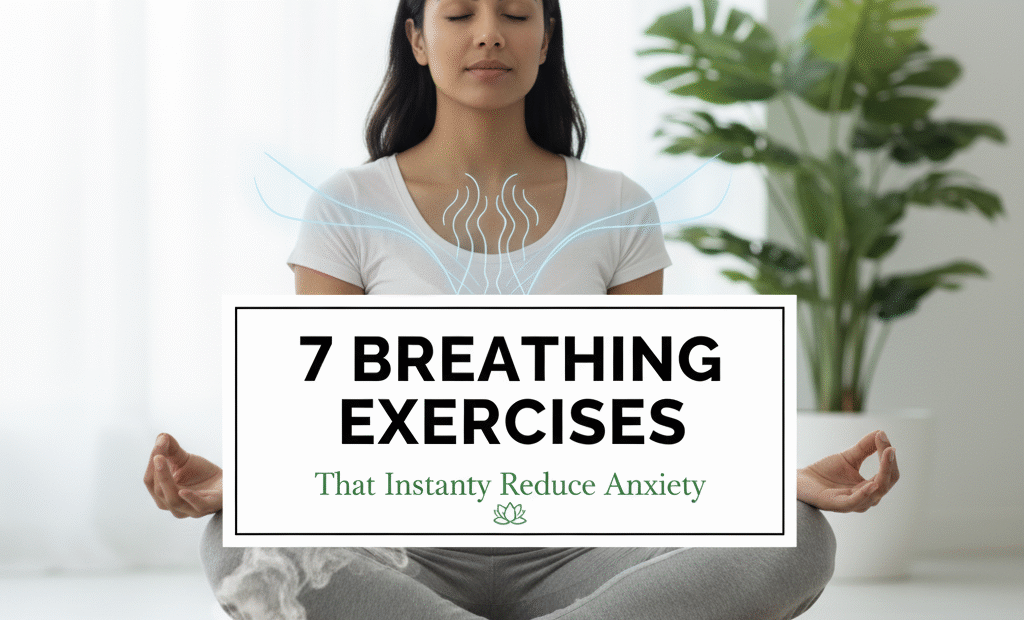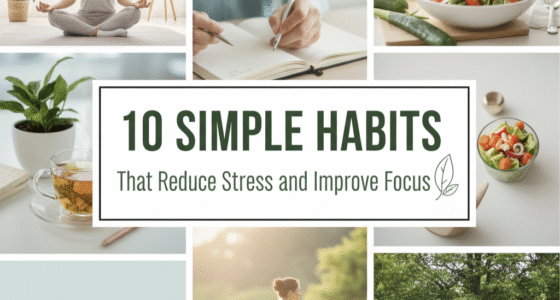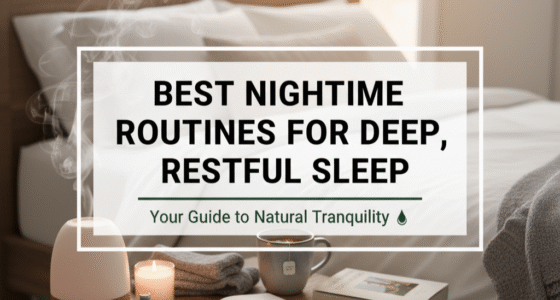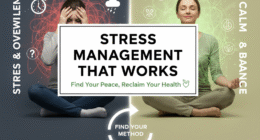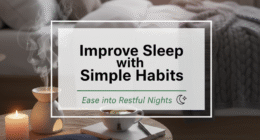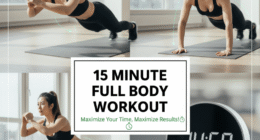Anxiety is one of the most common mental health challenges today, and when it strikes, you may feel your heart racing, chest tightening, and thoughts spiraling out of control. While long-term solutions like therapy and lifestyle changes are important, sometimes you need quick relief in the moment. That’s where breathing exercises come in. By simply controlling your breath, you can send a calming signal to your nervous system, reducing stress hormones and restoring focus. In this article, we’ll explore 7 science-backed breathing exercises that instantly reduce anxiety and help you regain control of your mind and body.
1. Box Breathing (Square Breathing)
Box breathing is a simple yet powerful method often used by athletes, Navy SEALs, and meditation practitioners to calm the nervous system.
- Inhale slowly through your nose for 4 seconds.
- Hold your breath for 4 seconds.
- Exhale through your mouth for 4 seconds.
- Hold again for 4 seconds.
Repeat this cycle for 5–10 minutes. It’s especially effective during panic attacks because it shifts your focus away from anxious thoughts and into controlled rhythm.
2. 4-7-8 Breathing
Popularized by Dr. Andrew Weil, the 4-7-8 method is designed to slow your heart rate and prepare your body for relaxation.
- Inhale deeply through your nose for 4 seconds.
- Hold your breath for 7 seconds.
- Exhale slowly through your mouth for 8 seconds.
This technique is best practiced before bed or during stressful situations when you need instant calm. The extended exhalation activates the parasympathetic nervous system, promoting relaxation.
3. Diaphragmatic Breathing (Belly Breathing)
Most people breathe shallowly into their chest, especially when anxious. Belly breathing, however, uses the diaphragm for deeper, fuller breaths that reduce stress hormones like cortisol.
- Sit or lie down comfortably and place one hand on your chest, the other on your belly.
- Inhale deeply through your nose, letting your belly rise while keeping your chest still.
- Exhale slowly through pursed lips, feeling your belly fall.
Practice this for 5–10 minutes daily to train your body to breathe deeply and respond calmly to stress.
4. Alternate Nostril Breathing (Nadi Shodhana)
This yoga-based breathing technique balances the mind and nervous system, making it ideal for reducing anxiety and restoring mental clarity.
- Sit upright and relax your shoulders.
- Close your right nostril with your thumb and inhale deeply through your left nostril.
- Close your left nostril with your ring finger, release the right nostril, and exhale.
- Inhale through the right nostril, then close it and exhale through the left nostril.
Continue for 5 minutes. This exercise brings balance to your body’s energy and reduces mental chatter.
5. Resonance Breathing (Coherent Breathing)
Resonance breathing helps synchronize your heart rate and breathing rhythm, leading to a calm, balanced state.
- Inhale for 5.5 seconds.
- Exhale for 5.5 seconds.
This creates about 5–6 breaths per minute, which is considered the optimal rhythm for relaxation and anxiety reduction. It’s especially effective if practiced for 10–20 minutes a day.
6. Lion’s Breath
This energizing yet stress-relieving breathing technique from yoga helps release tension in the face, chest, and body.
- Sit in a comfortable position and inhale deeply through your nose.
- Exhale forcefully through your mouth while sticking out your tongue and making a “ha” sound.
Repeat 5–7 times. This exercise feels silly at first, but it quickly relieves built-up tension and lightens your mood.
7. Progressive Relaxation Breathing
This combines deep breathing with muscle relaxation to calm both body and mind.
- Inhale deeply and gently tense a muscle group (like your shoulders or fists).
- Hold for a few seconds, then exhale and release the tension.
- Move through different muscle groups while focusing on slow, deep breathing.
This exercise is particularly helpful for people who hold anxiety in their muscles, such as the neck, jaw, or back.
Tips for Making Breathing Exercises More Effective
- Practice daily, not just when anxious, to train your body to relax faster.
- Find a quiet environment free from distractions.
- Pair breathing with meditation, soft music, or aromatherapy for added benefits.
- Use guided breathing apps if you struggle to stay focused.
When to Use Breathing Exercises
Breathing techniques can be used anytime anxiety strikes, but they’re especially effective:
- Before public speaking or presentations.
- During stressful workdays or exams.
- At night, to fall asleep faster.
- During panic attacks, to regain control.
Conclusion
Breathing exercises are one of the most accessible, natural, and instant ways to reduce anxiety. From the calming effects of box breathing to the balancing power of alternate nostril breathing, these seven techniques offer a toolkit you can use anytime, anywhere. The next time you feel anxiety rising, remember: your breath is a built-in tool for healing. With just a few minutes of mindful breathing, you can calm your body, clear your mind, and take back control.
Try one or two of these exercises today, and with regular practice, you’ll build resilience against stress and improve your overall well-being.
